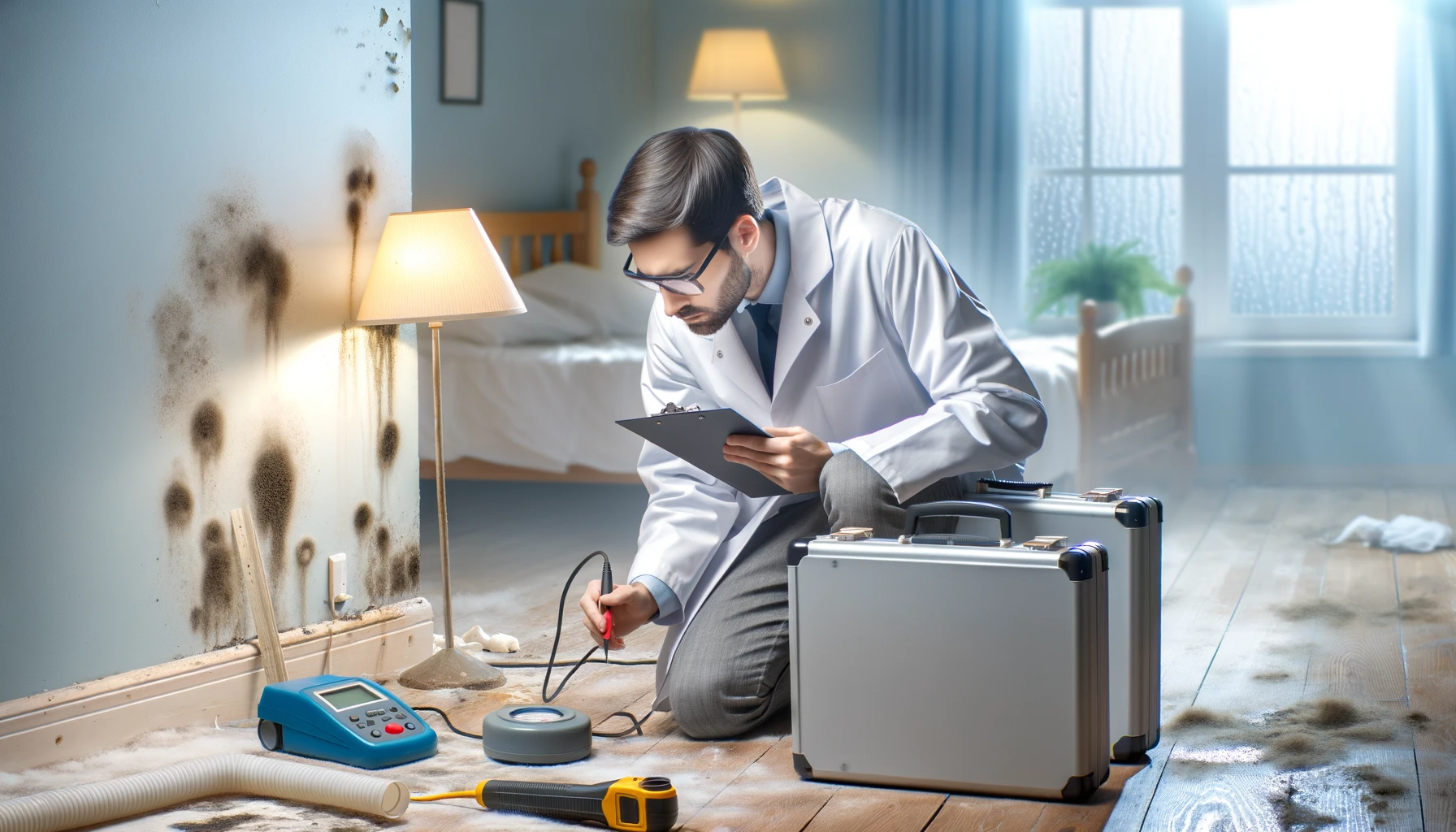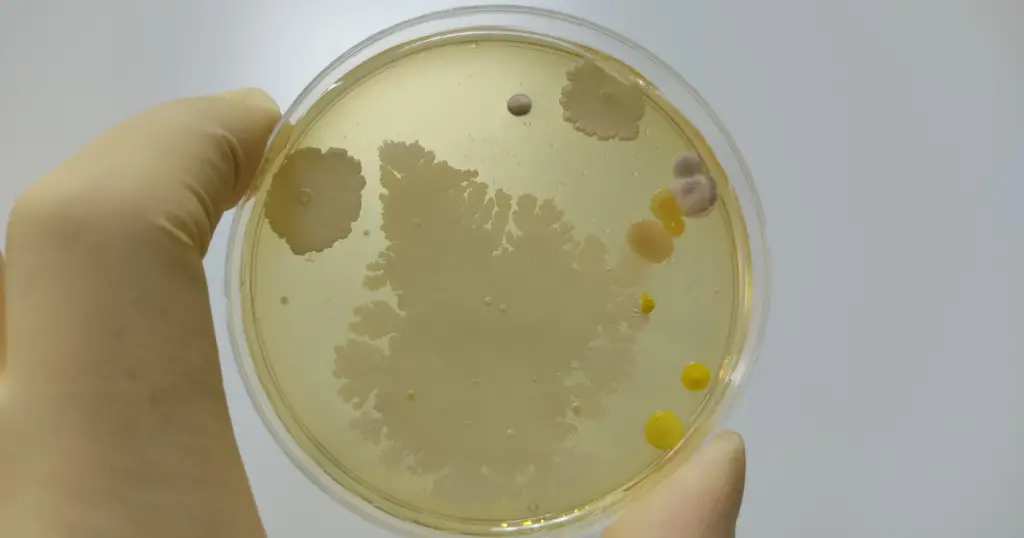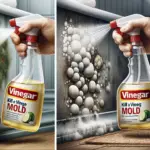Mold is a common problem in many homes and businesses, yet it’s also one of the most misunderstood. Knowing how to detect mold, identify potential sources of moisture that can lead to its growth, and adequately test for it are essential steps in preventing or dealing with existing mold infestations.
This guide will cover everything you need to know about mold testing: from understanding why testing is essential to identify the different types of tests available, so you can make an informed decision when choosing the right type for your home or business. We’ll also discuss what information each test provides and how best to interpret the results. Following this guide can ensure a safe environment free from dangerous levels of airborne mold spores.
What is Mold
Mold is a type of fungus that grows both indoors and outdoors. It produces millions of invisible spores to the naked eye, which can spread quickly through the air, making them hard to contain or eradicate. Mold thrives in moist environments, and it has a variety of causes and effects on health, environment, and safety.
A note about Mold Spores
Mold spores are ubiquitous; they exist everywhere, both indoors and outdoors. They’re microscopic and can spread quickly through the air, making them hard to contain or eradicate. While mold spores in small amounts may not cause harm, an abundance of them in a confined area can lead to serious health issues for those living or working within that space. That’s why it’s essential to understand how mold grows and spreads so you can take steps to prevent infestations from occurring. Testing for mold is one way of doing this, as it will provide information on the types of molds present and their levels in a particular environment.
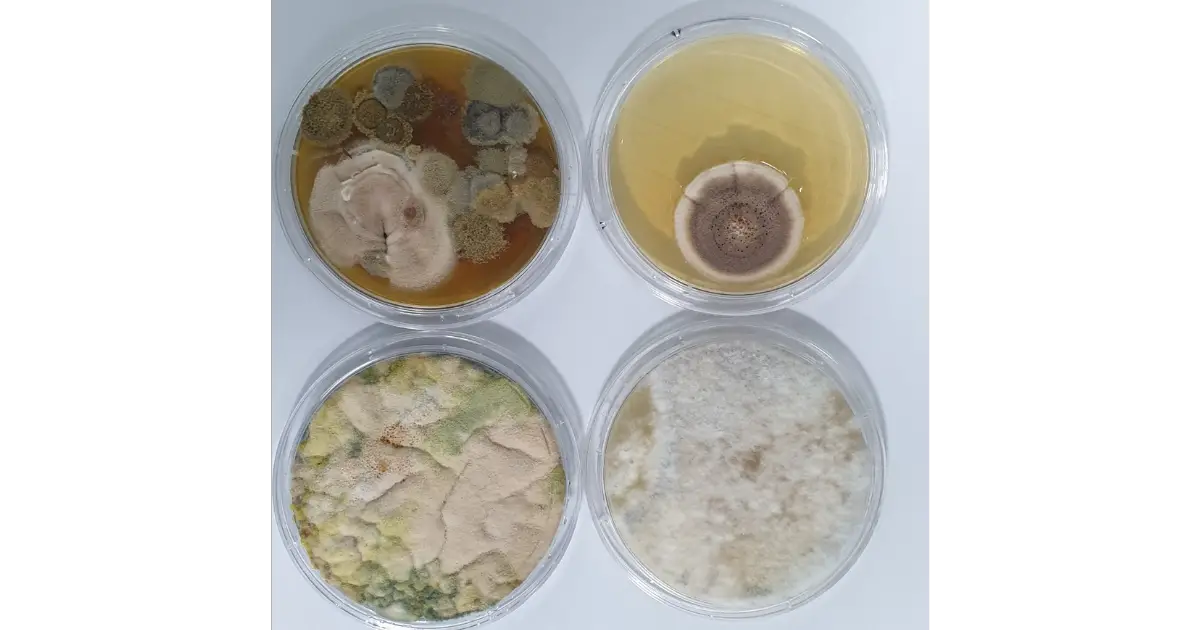
When you suspect mold, why test
Since it’s essential to deal with mold quickly to limit damage and health impacts, testing indoor air quality for mold problems can be a good idea. Mold testing can provide detailed information on the types of mold present and their levels so you know how serious an issue is and how best to address it. It can also help identify the source of moisture that’s allowing the mold to grow, so you can take steps to prevent future infestations. Finally, testing can reveal any hidden mold growth areas that you may not be able to see.
When to not test
There are a few reasons you might not want to test. If you know the conditions for rapid mold growth exist, it’s better to assume mold is starting to grow and begin mold remediation immediately.
Visible Mold Growth
While the EPA does set many standards for indoor air quality, they do not have a standard for mold spores. The EPA has not set a federal guideline for mold spore levels, and mold testing cannot be used to establish compliance with mold standards.
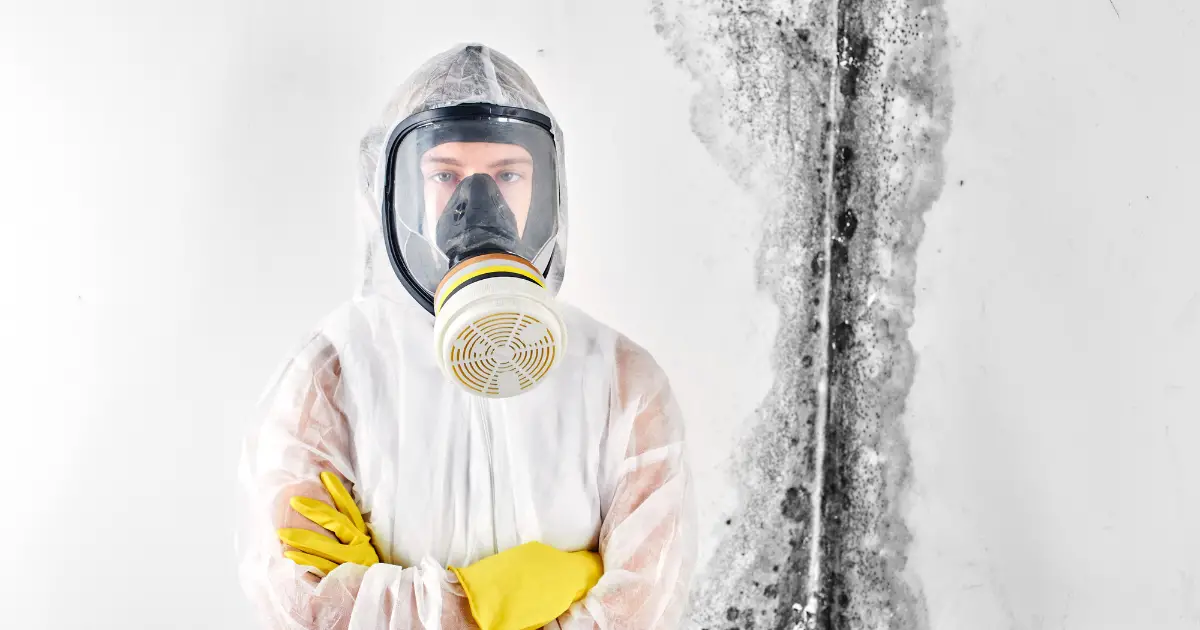
Air Quality and the problem with testing mold
There is visible growth – Testing is unnecessary if you can already see the mold. You should take steps to remove it right away. Most mold tests will take 72 hours to get back lab results. And by beginning the remediation process right away, you can lower the health risks and the costs of treating the moldy area.
Common Molds
Molds are a type of fungus that is found both indoors and outdoors. Some of the most common molds include:
- Aspergillus: This is a common type of mold found indoors and outdoors. It is often found in damp areas and can grow on various surfaces, including wood, paper, and insulation.
- Cladosporium: This type of mold is also common both indoors and outdoors. It is often found in wood, leather, and textiles.
- Penicillium: This mold is often found in damp or water-damaged buildings. It can grow on various surfaces, including wallpaper, carpet, and insulation.
- Stachybotrys chartarum (also known as black mold): This mold is often associated with water damage and can be found in damp or humid areas. It is essential to remove black mold promptly, as it can produce toxins that can harm humans.
- Alternaria: This mold is commonly found in outdoor environments and can be found indoors on plants, textiles, and damp areas.
Common locations for mold
Since mold spores are nearly everywhere, it’s important to note that you’re making sure there are acceptable mold levels. Some of the most common locations are:
- Basements and crawl spaces: These areas are often damp and poorly ventilated, which makes them prone to mold growth.
- Bathrooms: Mold can grow on shower curtains, bathmats, and other damp materials in the bathroom.
- Kitchens: Mold can grow in damp areas, such as under the sink or around the refrigerator.
- Laundry rooms: Mold can grow on damp laundry or in areas with poor ventilation.
- Attics and roofs: Mold can grow on insulation or other materials in these areas if there is a leak or other water problem.
- Around windows: Mold can grow on window frames, sills, and window air conditioning units if they are not properly maintained.
- Under carpets: Mold can grow on the underside of carpets, especially if they are in damp areas or if there has been a water leak.
Mold Inspection Process
- Perform a visual inspection: Look for any visible signs of mold, such as black, green, or brown spots on walls, ceilings, or other surfaces.
- Check for water damage: Look for any water damage, such as stains, peeling paint, warping, or wet building materials.
- Look for sources of moisture: Mold needs moisture to grow, so it’s essential to identify and fix any sources of moisture in the home. Familiar sources of water include plumbing leaks, condensation problems, and high humidity.
- Inspect HVAC system: Mold can grow in the ventilation systems of homes, so it’s essential to inspect them and ensure they are clean and well-maintained. Your air conditioner might have a blocked drain line or overfilled drain pan.
- Use your Nose: you can often identify a musty odor caused by indoor mold growth. Mold odors are often the first sign of hidden mold growth.
Conditions
One of the most significant factors in limiting mold contamination is catching it early. Looking for the proper environmental conditions that will lead to rapid mold growth is vital. High humidity, temperatures above 70 degrees Fahrenheit, and water damage can all lead to mold growth. Keeping your home relatively dry and well-ventilated is critical to preventing mold from spreading.
Health Affects of Mold
Mold is a type of fungus that can cause serious health problems if it’s left unchecked. Mold exposure can lead to a wide range of symptoms, including coughing, sneezing, wheezing, and difficulty breathing. In some cases, mold exposure can even trigger an asthma attack or cause other allergic reactions. People with weakened immune systems are particularly susceptible to the effects of mold and may develop more severe illnesses such as bronchitis or pneumonia. It’s essential to identify and remove any sources of indoor mold to protect your health.
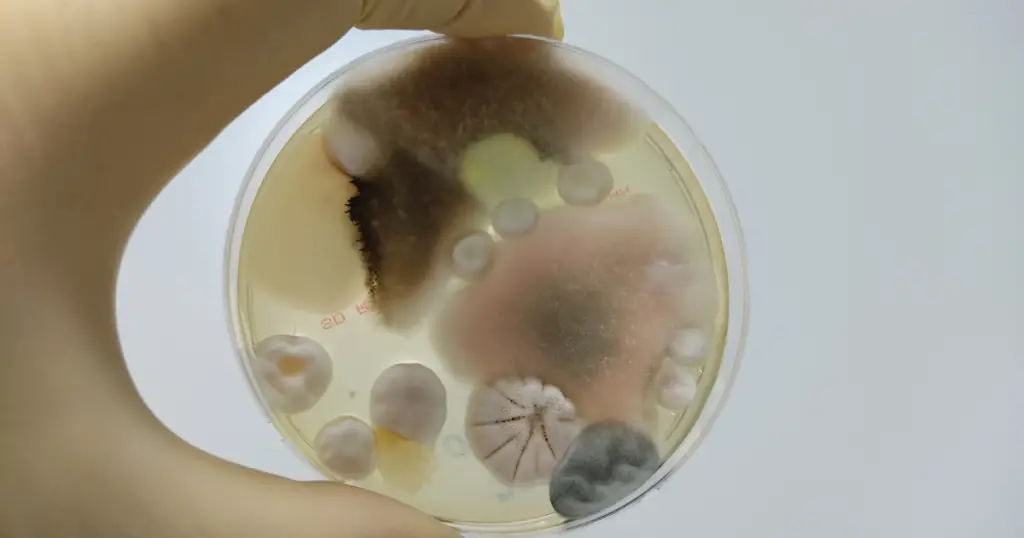
Types of tests
If you’re trying to identify mold in your home, a few different types of tests can help. Air sampling is one option and involves collecting air samples from the indoor environment and analyzing them for mold spores. Surface sampling measures the amount of mold on surfaces such as walls or floors. Finally, bulk sampling involves taking a larger piece of building material, like drywall, and sending it to a laboratory for mold testing.
Air Tests
There are a couple of ways of performing an airborne mold test. This type of test is almost always relativity, meaning how much mold is in the air compared to another location. The most common way to perform an air test is to take two air samples; one outside and one inside. The results are compared to determine the amount of mold indoors versus outdoors. Another way is to run an air test over some time period, such as 24 hours.
Surface tests
Surface tests measure the amount of mold on a surface and help determine if an area needs to be cleaned. The most common type of surface test is called a swab test and involves taking a sample of the surface by wiping it with a sterile cotton swab. The swab is then sent to a laboratory for analysis.
The tape lift test involves placing a piece of adhesive tape on the surface and removing it to look for visible mold spores. The tape is then sent to a lab for analysis.
A testing professional often performs this mold testing after the mold removal is complete. By using 3rd party mold testing, you will be sure the presence of mold is in an acceptable level.
Dust tests
A dust test measures the number of mold spores in the air. It involves collecting a sample with a specialized vacuum cleaner and analyzing it for all types of spores. Dust tests are usually performed after an initial inspection has been completed and can help determine if mold removal was successful.
Professional mold inspectors also have a tool called a video particle counter. This device can detect mold spores in the air that may not be visible to the naked eye. By analyzing particle sizes, a video particle counter can find mold very quickly. However, it doesn’t give a definitive answer because this tool doesn’t test the mold directly, but measures particle sizes to detect a mold problem.
Mold Dogs?
Yes, there is such as thing as a mold dog. These specially trained canines can detect the scent of mold and alert their handlers if they find any in an area. The dogs can sniff out hidden moisture and help locate sources of water damage or high humidity in homes. This is one of the fastest ways to perform a mold inspection. But it’s a relatively expensive process.
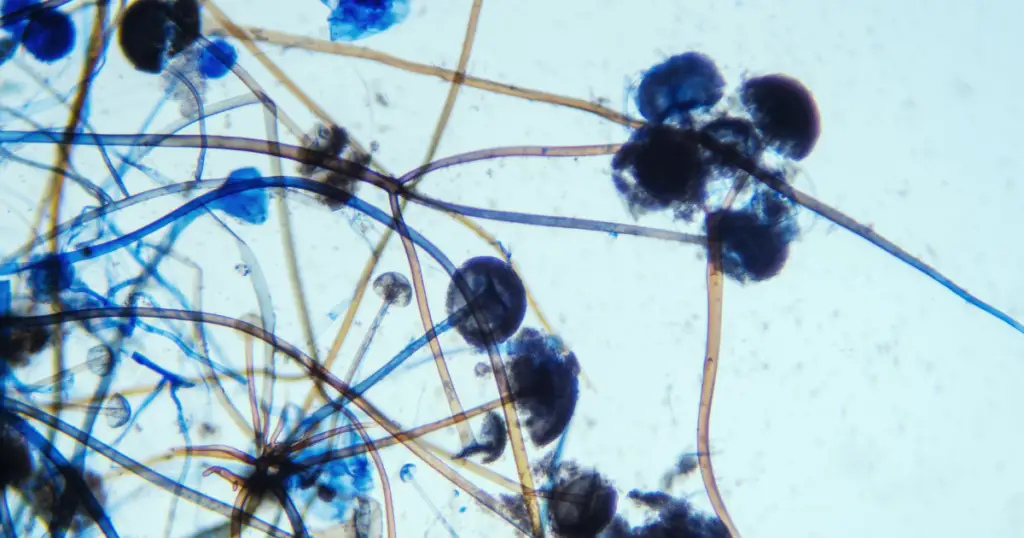
Understanding the results
You can make informed decisions once the Mold inspection is complete and the test results are back. Understanding the results and how you can use them is essential to decide if mold removal is necessary.
Different types of molds have different toxicity levels, so it’s essential to understand which molds are present in your home. And the amount of mold growing relative to a location with no mold complaints.
The test results should include a range of safety levels and the action to take if the results are above these levels. Again, mold does exist everywhere, but it is only a problem if it is snowballing.
Professional mold inspectors can interpret the results and help you decide what steps to take if there is a problem. They can also advise on how to prevent future problems.
Finding the source
Finding the Source of the mold, if it is not obvious is the top priority. We recommend contacting a professional if you have elevated levels but cannot locate the source. They will have the tools and experience to find the moisture problems and limit your mold exposure.
[/et_pb_text][/et_pb_column][/et_pb_row][/et_pb_section]
